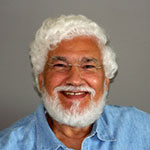June 19, 2013
The Nile: Egypt must start a Blue Revolution, Part 1/2
Last week, the message of the two-hour live-TV presidential meeting in Cairo was clear: Egyptian views out there to solve the nation's water crises with Ethiopia are as mediocre as that of the government's or even worse; some were calling for the use of force.
One view was for Egypt to leverage its ties with the Arab and the Muslim worlds to talk to China; China is Ethiopia’s primary trade partner and has expressed willingness to finance its dam construction, the largest in Africa and offered Chinese expertise in building large dams. Another was to side with Eritrea; Ethiopia and Eritrea fought a border war in 1998-2000 that has killed an estimated 70,000 people.
President Mohamed Morsi’s meeting with his political supporters comes on the heels of months of wrangling between Egypt and Ethiopia and a Wikileaks report saying Egypt is ready to attack Ethiopia if its dam project on the Nile went forward.
The importance of the Nile to Egypt is hard to exaggerate.
As a result of Ethiopia’s new dam, Egypt will lose its 5,000-year old source of freshwater threatening the survival of the desert nation (97% of Egypt is barren desert) and its ability to provide drinking water and to grow enough food for its expanding population.
Greek historian Herodotus rightly said, "Egypt is the gift of the Nile.” Egypt is the largest desert oasis in the world and life is concentrated on the river banks where today most of its 90 million people live.
“Ninety-five percent of Egypt’s water comes from the Nile. We depend on the Nile more than any other Nile basin country,” said Hani Raslan, an expert on water politics at the Al-Ahram Center for Political Strategic Studies in Cairo.
Ten years ago Dr. Boutros Ghali, the former UN Secretary General warned the nation, “I believe that the most urgent problem facing Egypt is water. Because tomorrow Ethiopia, where more than 80% of the water in the Nile comes, may begin using the source of the Nile — as they need it for irrigation — or Kenya, which is one-third desert. All those countries will sooner or later need to use the Nile water, and then you will have a problem of water in this country. When I was Minister of Foreign Affairs I tried, without success, to provoke an interest in the government. I said look what happened with the Danube, what happened in Asia with the Mekong. I even sent the Minister of Irrigation to visit the Mekong. I failed.”
“For me the real problem is the problem of the Nile, because there is no rain in this country. Unless in the next 20 years we have a new invention to produce rain,” he added.
Indeed cloud seeding technology is used today in a number of countries to turn rain on and off but it is expensive and dangerous. The Xinjiang region of China is home to the world’s largest cloud-seeding technology. But in November 2009, clouds were seeded over China to alleviate a drought, but the temperature suddenly dropped, and the resulting blizzard closed highways and the Beijing airport, while heavy snows in other cities collapsed roofs, injured scores, and killed at least eight people.
Back in 1962 the visionary President John F. Kennedy said, “If we could ever competitively, at cheap rate, get fresh water from salt water, that would be in the long-range interests of humanity which would really dwarf other scientific accomplishments.”
Kennedy’s dream made perfect sense as 97% of the earth’s water is too salty for human consumption. But the technology is expensive; distilling seawater requires so much energy that it can be used in wide scale only in countries where freshwater is scarce and fuel and/or money are plentiful like Saudi Arabia and Singapore.
Saudis have become the world’s largest users of desalination, with 28 plants supplying 70% of the kingdom’s water. In April 2009, King Abdullah pushed a button to start up the world’s largest desalter; the $3.4 billion Shoaiba Desalination Plant, producing 800 thousand cubic meters of water a year and generates electricity for 1.5 million people. But the nation’s diesel plants consume 1.5 million barrels of oil a day, and plans under way to open the world’s largest solar-powered diesel plant.
No country uses water as carefully as Singapore with its 4.8 million of population. Supply comes from a variety of sources, 40% is piped in from Malaysia, and a remarkable 30% is provided by desalinated ocean water and recycled waste water and both technologies are perfected that they are exporting them to such countries as the UAE.
Singapore’s recycled waste water is so thoroughly cleansed that it is used by the nation’s booming chip-making high-tech industry which requires ultra pure water. The rest of the country’s water needs is drawn from large-scale rainwater harvesting and other local sources.
Water demand in Singapore is controlled by high water taxes and tariffs. The government educates and constantly reminds citizens about the importance of conserving every drop.
And this tightly controlled hydrological system is overseen by a well-funded, highly educated, politically autonomous water authority. Its members invest in dams, bioreactors, and desalination technology as they see fit. As result, Singapore’s per capita domestic water use fell from 165 liters a day in 2003 to 155 in 2010, and the nation’s supply is clean and relatively secure.








